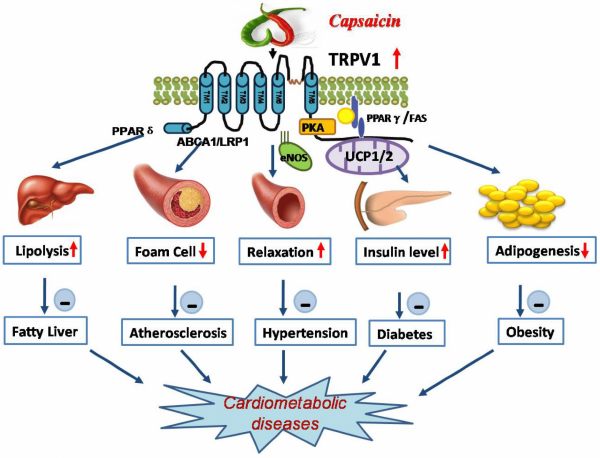I premiati di quest’anno hanno dato contributi fondamentali allo scoperta dei canali ionici posti sulla superficie delle cellule nervose che si aprono in risposta alle alte e basse temperature e quelli che reagiscono alla pressione, due fattori fondamentali che consentono all’organismo d’interagire con l’ambiente
The Nobel Prize in Physiology or Medicine this year went to David Julius and Ardem Patapoutian for their discovery of the receptors that allow us to perceive temperature in the body and are the basis of the sense of touch.
David Julius was born in 1955 in New York, USA. After graduating from the Massachusetts Institute of Technology in 1977, he received his doctorate from the University of California at Berkeley in 1984. He currently works for the University of California at San Francisco. He has been awarded numerous awards for the
Ardem Patapoutian, classe 1967, è nato a Beirut, in Libano. Emigrato negli Stati Uniti per sfuggire alla guerra che ha investito il paese nel 1982, si è laureato in biologia cellulare e dello sviluppo presso l’Università della California a Los Angeles, conseguendo poi il PhD in biologia presso il California Institute of Technology nel 1996. Dopo un periodo all’Università della California a San Francisco (UCSF), ha lavorato per diversi anni per l’Howard Hughes Medical Institute dello Scripps Research di La Jolla, in California, e per il Novartis Institute of Genomics.
Research into the pathways that allow the brain to react to various mechanical and thermal inputs that stimulate the skin has a long history, which can be traced back to the philosopher Descartes. However, we have to wait until the early twentieth century for scientific research which made it possible to identify the highly specialized nerve fibers of the sense of touch, which allow us to distinguish between painful and non-painful stimuli, a discovery that led to Joseph Erlangen and Herbert Gasser the Nobel Prize in Physiology or Medicine in 1944.
Since then, many scientists have dedicated themselves to trying to understand how the sense of touch is so refined that it allows us to distinguish, for example, rough surfaces from smooth surfaces. Until the 1990s, however, there still remained a gray area on the specific molecular processes that translate heat or mechanical stimuli into electrical signals that then travel through the nervous system.
The key to answering these questions was in a small molecule, capsaicin, contained in chili peppers and responsible for the spiciness of this food.
In the late 1990s, David Julius, a researcher at the University of California at San Francisco, used a very time-consuming and laborious method to identify which protein was responsible for the reaction to capsaicin. To this end, he had created a library of millions of DNA fragments corresponding to the genes that were expressed in the nerve cells reactive to this substance. By expressing these genes in cultured cells that normally did not have them, Julius was able to identify a protein that constitutes
Questa scoperta ha aperto la strada allo studio, con una tecnica analoga, della sensazione del freddo, sfruttando il mentolo, la sostanza contenuta nella menta che dà la sensazione di freschezza. Julius e, indipendentemente da lui Ardem Patapoutian, dell’Howard Hughes Medical Institute dello Scripps Research di La Jolla, in California, sono riusciti a scoprire il TRPM8 ion channel, which similarly to TRPV1, opens at low temperatures, functioning as a cold receptor.
At that point it remained to devote oneself to the other unsolved mystery, concerning the molecular mechanisms underlying the perception of mechanical stimuli. Using a cell line that emitted a measurable electrical signal when individual cells were pricked with a micropipette, and selecting among a multitude of genes for those that expressed proteins related to mechanical sensitivity, the two researchers identified two pressure sensitive ion channels, named Piezo1 and Piezo2, expressed at high levels on the surface of sensory neurons.
Studi successivi hanno poi dimostrato che tali recettori sono fondamentali non solo per il senso del tatto, ma anche per la propriocezione (cioè la capacità di percepire posizione e movimento del proprio corpo), nonché per la regolazione della pressione sanguigna, della respirazione e per il controllo della vescica (e del rimodellamento dell’osso).
The recognition of the Swedish Karolinska Institutet therefore goes to a fundamental research contribution, a single method that has made it possible to discover the many nuances of the sense of touch and the perception of heat, two fundamental elements that allow us to interact with the surrounding environment.
Studi successivi hanno chiarito che queste proteine sono coinvolte anche nella regolazione della pressione sanguigna, della respirazione e del rimodellamento dell’osso.
Related news: Perché il Nobel per la Medicina non è andato ai “genitori” del vaccino contro il Covid
